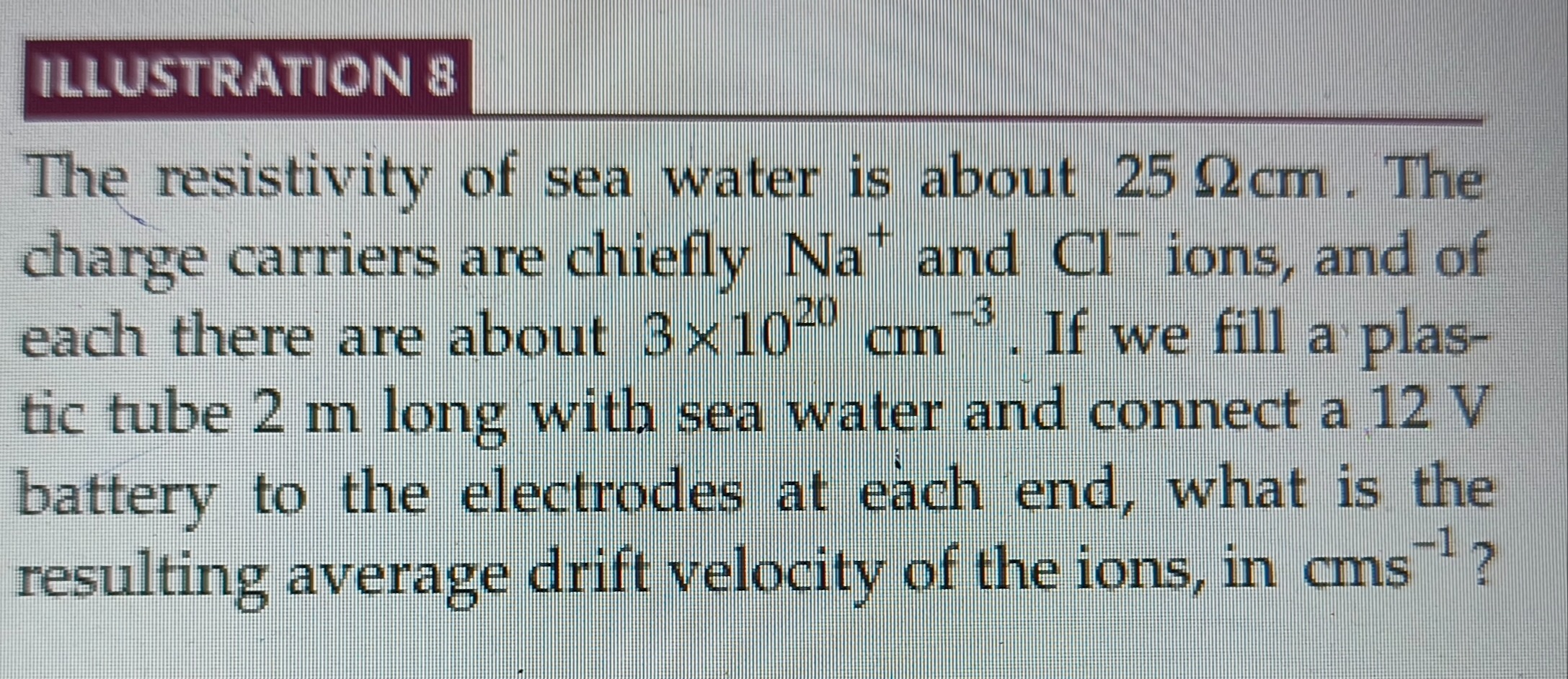Question
Question: ILLUSTRATION 8 The resistivity of sea water is about 25 $\Omega$cm. The charge carriers are chiefly ...
ILLUSTRATION 8 The resistivity of sea water is about 25 Ωcm. The charge carriers are chiefly Na+ and Cl− ions, and of each there are about 3x1020 cm−3. If we fill a plastic tube 2 m long with sea water and connect a 12 V battery to the electrodes at each end, what is the resulting average drift velocity of the ions, in cms−1?

2.5 x 10−5 cms−1
2.5 x 10−7 cms−1
5.0 x 10−5 cms−1
5.0 x 10−7 cms−1
2.5 x 10−5 cms−1
Solution
Explanation of the Solution
The problem asks for the average drift velocity of ions in sea water under a given electric field.
-
Identify given quantities and convert units:
- Resistivity, ρ=25Ωcm=0.25Ωm.
- Concentration of Na+ ions, nNa+=3×1020cm−3.
- Concentration of Cl− ions, nCl−=3×1020cm−3.
- Total charge carrier concentration, n=nNa++nCl−=6×1020cm−3.
- Convert n to SI units (m−3): n=6×1020×(102)3m−3=6×1026m−3.
- Charge of an ion, q=e=1.6×10−19C.
- Length of the tube, L=2m.
- Applied voltage, V=12V.
-
Calculate conductivity (σ) and electric field (E):
- Conductivity is the reciprocal of resistivity: σ=ρ1=0.25Ωm1=4Ω−1m−1.
- Electric field strength: E=LV=2m12V=6V/m.
-
Relate current density (J), conductivity (σ), and electric field (E):
- Using Ohm's Law in point form: J=σE.
- J=(4Ω−1m−1)×(6V/m)=24A/m2.
-
Relate current density (J), carrier concentration (n), charge (q), and drift velocity (vd):
- The current density is also given by J=nqvd, where n is the total number of charge carriers per unit volume and vd is their average drift velocity.
- Rearrange to solve for vd: vd=nqJ.
-
Calculate the drift velocity:
- vd=(6×1026m−3)×(1.6×10−19C)24A/m2.
- vd=9.6×10724CA⋅m=2.5×10−7m/s.
-
Convert the drift velocity to the required units (cms−1):
- vd=2.5×10−7m/s×1m100cm=2.5×10−5cm/s.
